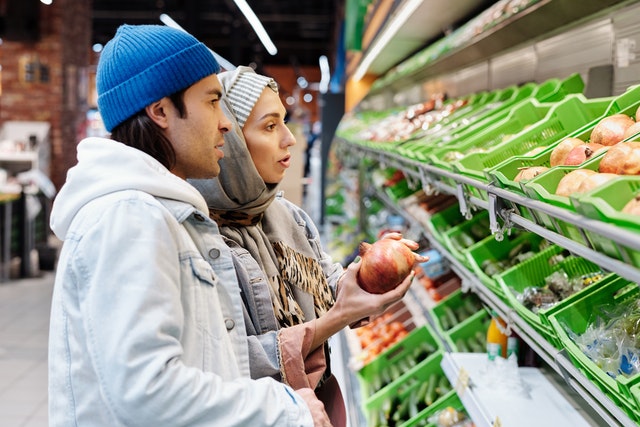As consumers are confronted with price rise after price rise in the supermarket as a result of the war in Ukraine and the sanctions on Russia, companies are trying to find different ways to pass on their increased costs to the customer.
Customers are usually quick to realise their shopping carts are becoming more expensive, but they are not as good at noticing that they receive less for the same price – the so-called "shrinkflation" phenomenon.
"How to sneakily raise the price without actually raising the price," Dutchman Gert-Jan Boer posted on Twitter this week, along with a photo showing two equally large boxes of baking flour, but one contains 500 grams, the other only 400.
This is by no means an isolated case, as illustrated by the thousands of retweets and comments from people with examples from their own lives: other consumers complained about how the number of lozenges in one box has been halved, or how the same price only gets you 80 instead of 100 grams of cold meat cuts.
This phenomenon, called "shrinkflation," is what the Dutch Consumers' Association has been warning the population about: it is a consequence of increased transport, energy and raw material costs, which have been driven even higher by the invasion of Ukraine.
As a result, food producers not only charge higher prices for the same products, but sometimes also do the opposite: charge the same price for less. "In short, it means that what you are buying has become smaller. So you get less for the same money," Joyce Donat of the Consumers' Association said on Dutch radio last week.
The price often remains the same while the content has shrunk, but sometimes the products are even made a bit more expensive. "Often it is just a few pennies, so it is not very noticeable, but because the packaging has also become smaller, the price rise is much greater than you realise."
Unfortunately, it is hard for consumers to arm themselves against shrinkflation, Donat said. "You would have to know in advance what you used to pay for your products and exactly how much was in the packaging at that time. In practice, however, people do not read the small text on the back and say: hey, since when does this only contain 80 instead of 100 grams?"
Related News
- Toilet paper to tomatoes: these products now more expensive in Belgian stores
- More Belgian supermarkets staying open on Sundays
- Food inflation hits highest levels since 1983 at 4.63%
Retail expert Els Breugelmans of KU Leuven told De Morgen that this is a hidden way of passing on the price increases of their own costs to the customer. "While food producers always announce big when there is more in a pack for the same price, they deliberately do not announce it when there is less in it."
This way, shrinkflation is often a lot less obvious than "regular" price increases, because consumers usually notice the latter more quickly, she explained.
Still, this is not a new phenomenon, as a study by the Dutch Consumers' Association last year showed that dozens of products had shrunk in content, ranging from tapas olives (from 165 to 150 grams) and naan bread (from 280 to 240 grams) to cheese slices (from 200 to 150 grams). In the most extreme case, the consumer even received 59% less for the same price.
"Sometimes producers do it even more subtly. For example, chip producers suddenly put fewer chips in the same packaging," said Breugelmans. Since the start of the war in Ukraine, around five crisps have disappeared from each bag across all the Lays brands.
Smaller Snickers bars
One of the most famous examples of shrinkflation dates back to 2016, when chocolate brand Toblerone drew the ire of many British people because it made its iconic mountain bars 10% lighter and increased the distance between the chocolate pyramids, but the price remained the same.
In Belgium, Mars and Snickers bars have shrunk in centimetres in recent years without the price changing accordingly.
Consumer protection organisation Test-Achats indicated that it has not (yet) received any complaints from Belgian residents who suddenly get less of a product for the same price, but no one is ruling out the possibility that this is happening.
Legally, there is little you can do about it: producers are free to adjust both the price and the quantity of their products, said Breugelmans. As long as the correct quantity is stated on the packaging, there is no question of deception. "So the producers are not doing anything wrong, but as a consumer, you feel cheated."

